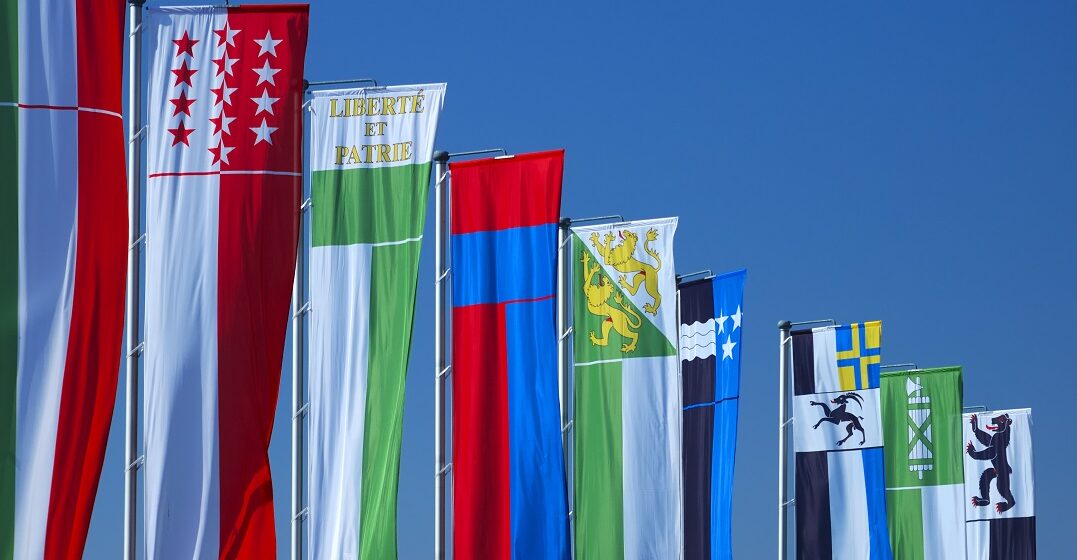A brief overview of the Swiss canton flags
Published on June 21, 2023
Switzerland is renowned for its stunning landscapes and rich cultural heritage, but it’s also recognized for its unique system of cantons. These administrative divisions of the country have played a pivotal role in shaping Swiss history and identity.
One fascinating aspect of these cantons is their individual flags, which not only represent their distinct identities but also offer a glimpse into Switzerland’s diverse cultural tapestry. In this article, you’ll learn about the history of Swiss cantons and explore the significance of some of their flags.
Switzerland is divided into 26 administrative divisions known as cantons. The canton system dates back to the Middle Ages when various regions of Switzerland formed alliances for mutual protection. Over time, these alliances evolved into the cantons we know today.
Each canton possesses a considerable degree of autonomy, with its own government, constitution and legal framework. The various cantons are unified under a single federal government, resulting in Switzerland’s unique model of decentralized governance.
The Swiss canton flags serve as powerful symbols, reflecting the history, values and identities of the respective regions. While the national flag of Switzerland (a red square with a white cross) unifies the country, the cantonal flags offer a glimpse into the diverse cultural, historical and linguistic backgrounds that shape Switzerland’s tapestry.
The flags of the Swiss cantons incorporate a range of colors, designs and symbols. Some flags feature a single dominant color with simple designs, while others embrace complex compositions. These flags often display elements such as coats of arms, religious symbols and motifs significant to each canton’s heritage.
If you plan on visiting Switzerland, keep an eye out for the vibrant Swiss canton flags. Each one tells a unique story, beckoning you to explore the heritage and individuality of the canton it represents. It’s a wonderful way to learn about the history of the country on your travels.
